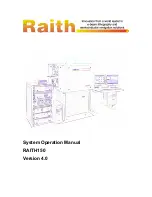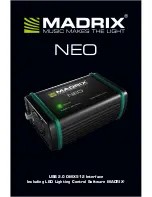
- 5 -
It should be emphasized that the seabed image data are not corrected for beam pattern variations in the
receiver beams. This may be required where the beams are not strongly overlapping, such as in the
middle of the swath when running equidistant beamspacing when the number of beams is low such as on
the EM 1000. It may also be required when the coverage of a beam has been extended due to a failed
detection in a neighboring beam, or in the extreme outer part of the outermost beams. The beam pattern
variation with angle is given in most textbooks on sonar technology or radio antennas or radar, and is
generally in the form of a sinc function (sinx/x), but note that the pattern is not symmetrical with angle
when appreciable beam steering has been applied such as on the EM 12.
5. Comparisons
The major differences between the seabed imagery derived from a Simrad multibeam echo sounder and
an ordinary sidescan sonar are:
•
The sidescan sonar does not measure calibrated backscattering strength, but only amplitudes with an
unknown absolute level and only compensated by a 20/30/40 logR TVG.
•
The sidescan sonar data may be slant range corrected, but only presuming a flat bottom and cannot
thus be correctly scaled taking into account actual variation in bottom slope.
•
The sidescan sonar is usually towed closed to the bottom and most data is collected at low incidence
angles for shadow detection purposes. In contrast, most of the multibeam data is collected at higher
incidence angles for classification purposes.
Finally it must be observed that the resolution of a sidescan may be better as it is cheaper to provide a
sidescan sonar with narrower alongtrack beamwidth and higher range sampling rates than a multibeam
echo sounder, allthough the specifications of the newer Simrad systems are quite good in this regard.
Other multibeam echo sounders (Seabeam, Atlas) are also to some extent capable of providing imagery
data. However, as far as we know, the logged data of these systems are not such that they allow the
postprocessing to absolute levels, resolution or correct geographical scaling as for the Simrad systems.
The records provided seem to be of the same data as would usually go to a greyscale recorder of an
ordinary sidescan sonar. Thus the number of points is limited, the scaling is not correct, and there seems
to be limited knowledge provided with repsect to how the data is acquired and what the internal
processing has done with the data.
Lambert's law removal can be done by adding 20 log(R/R
I
) to all data points. Correcting for erroneous
R
I
(such as could occur when the central beams do not have valid detections) would involve
calculating and applying the difference between the applied TVG and the correct TVG. Correcting for
non-flat bottom involves removal of used Lambert's law and replacing it by 20 log(sine of 2D
incidence angle) plus the same area correction as described above for the beam backscatter
coefficients. Use of a different model would likewise involve removal of used Lambert's law,
correction for area, and subtraction of model's backscatter using the actually encountered 2D
incidence angle. To obtain true backscatter coefficients involves removal of used Lambert's law, area
correction, and then correction for used backscatter coefficient in the flattening process near normal
incidence.























